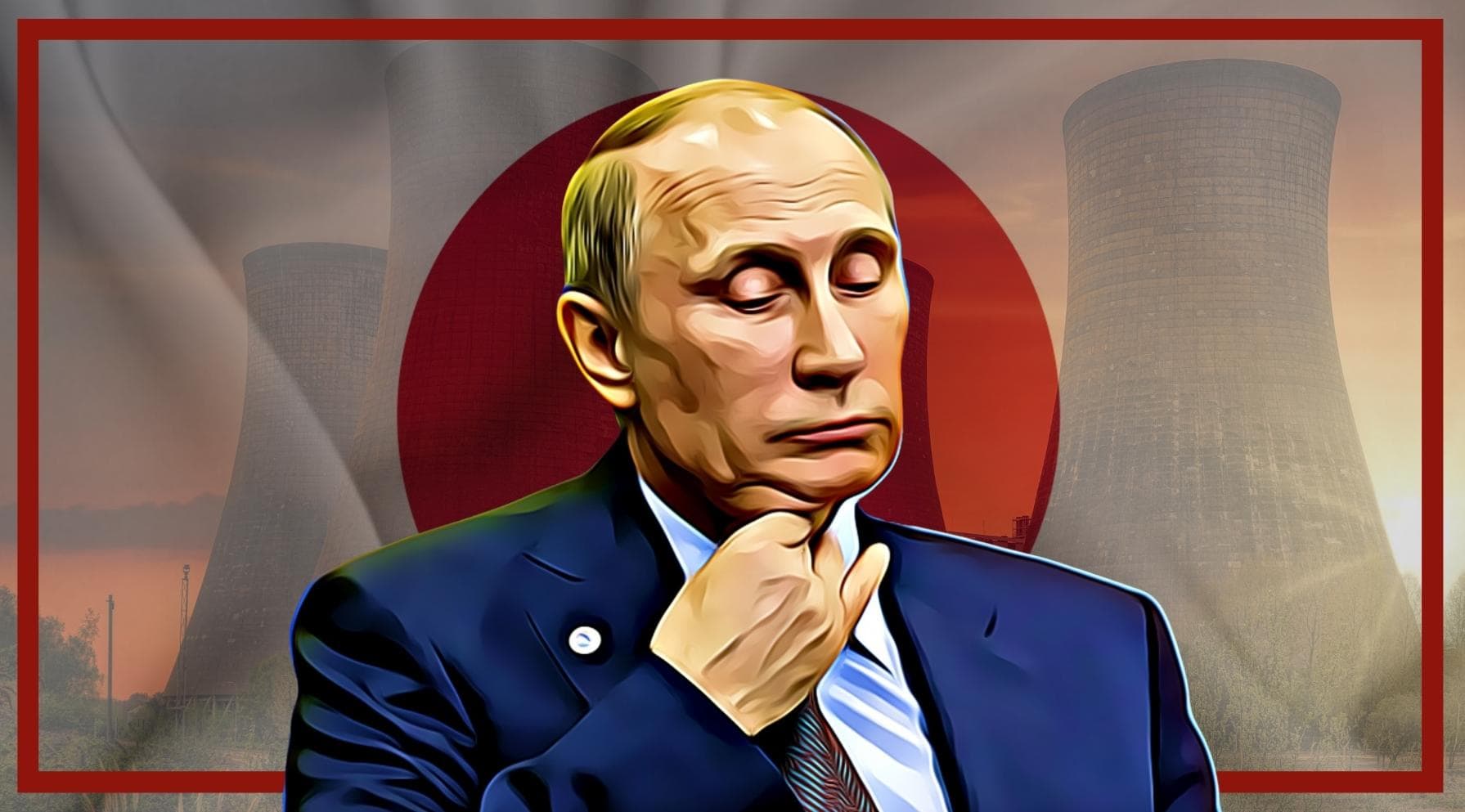By David Whitehouse
The reconfiguring of global energy supplies triggered by Russia’s war in Ukraine gives import-dependent Japan an opportunity to scale up in renewable energy.
Higher prices triggered by the war leave Japan particularly exposed. The country’s energy self-sufficiency rate of 11.2% in 2020 was one of the lowest in the OECD. Renewable energy has been growing steadily in Japan and accounted for about 20% of the country’s electricity production in 2020. The country has committed to cut its greenhouse gas emissions by at least 46% by 2030 and reach net zero by 2050.
Japan pioneered liquefied natural gas (LNG) technology in the 1970s to meet its industrial needs and remained the world’s largest buyer in 2020. But the country is now turning its back on its own invention. Its 2030 energy generation goals set a target of cutting gas usage for electricity by the end of this decade from 37% to 20% of the energy mix.
The war is “pushing renewable energy sources up the agenda,” says Joseph Dellatte, a research associate at Kyoto University. “The fear of investing in a new technology is being reduced by higher global energy prices.”
Solar will be big part of the solution, but won’t be able to meet Japan’s needs on its own. There are already a lot of solar panels in place and the number of roofs where they could be installed is finite. There are also constraints on wind power. Onshore, the country’s high population density and mountainous terrain leave little available land for projects, and offshore the country is surrounded by deep ocean floors, which makes wind generation more expensive. The Sea of Japan is less deep than the Pacific, but there is less wind.
That means floating wind turbines are likely to be part of the long-term solution, says Dellatte, who spent six years in Kyoto before returning to Paris from where he continues to lecture remotely at Kyoto University. The renewable energy community in Japan is pressing for more offshore wind as prices fall and the government will probably take new steps to implement the solution, he says.
Action ‘Overdue’
The war and higher global energy prices have been a reminder for Japan that “relying on imported fuel can be a huge risk, while reconfirming that domestic energy, primarily renewables, is the way to enhance energy security,” says Kumiko Shibaoka, head of research at Shulman Advisory in Tokyo.
The government is assessing and shortlisting areas that have the potential for offshore wind and geothermal development, which is reducing the financial burden for developers, Shibaoka says. The lowest price of the first offshore wind auction held last year was 11.99 yen/kWh, a first good step made given the government’s target to aim for 8-9 yen/kWh by 2035, she adds.
Before the war, global prices for oil, gas and coal were already rising due to post COVID-19 economic recovery. Putin’s invasion of Ukraine reinforces the need for Japan to expedite investments in zero emissions domestic energy sources, says Tim Buckley, director at Climate Energy Finance in Sydney. It’s “long overdue” for the Japanese government to take a lead in progressing domestic installation and establish the supply chain, Buckley says.
Japan relies less on Russia for its energy than Europe, with 3.6% of its crude oil and 8.8% of its LNG coming from Russia in 2021. The government said in response to the Russian invasion that it will try to speed up the start of operations of new offshore wind power plants. Buckley argues that the country is now paying the price for years of inertia. “Japan has spent a decade thinking and talking about offshore wind, while Germany and the UK have become world leaders,” and China in 2021 took the global lead in installing offshore wind, Buckley says.
“I’ve not seen any serious awakening to the need for urgency,” Buckley says. The 46% emissions cut by 2030 pledge made in 2021 seems to be near-forgotten, he adds. Energy savings offer some low-hanging fruit. According to the Renewable Energy Institute in Japan, the country’s energy efficiency in manufacturing has changed little in 30 years, and the insulation performance of homes is low compared with Europe.
Hydrogen, Ammonia
According to the International Energy Agency (IEA), Japan until now has relied mainly on regulatory measures and voluntary agreements to reach its climate goals. Making greater use of market-based tools is a policy option that Japan could explore. Japan imposes lower prices on CO2 emissions from energy use than many other IEA members, and could make better use of price signals to enhance low carbon technologies to reduce CO2 emissions, the IEA says.
But the Renewable Energy Institute in Japan argues that there is nowhere to store large volumes of carbon dioxide in the country. “Precious time and funds should not be spent on such attempts that have no realistic prospect of success,” the institute argues.
The institute is more positive on corporate power purchase agreements (PPAs), which give companies more freedom to buy energy. Increasing numbers of companies are using PPAs in retail, logistics, manufacturing, IT, real estate, construction and finance, the institute says.
Japan wants hydrogen to play a central part in its energy mix. By 2030, the country aims to have 800,000 fuel cell vehicles and more than 5 million residential fuel cells. There has also been a big about-turn on nuclear power following the 2011 Fukushima accident as alternatives dwindle. Nuclear energy is now projected to rebound from 6% of total energy generation in 2019 to 22% in 2030.
Ammonia, which is a derivative of hydrogen, can contribute to power generation in Japan, says Prakash Sharma, vice-president of multi-commodity research at Wood Mackenzie. The firm’s research predicts that on average the delivered cost of low-carbon ammonia to Japan is expected to fall 60% from US$1,250 per tonne currently to under US$500/tonne by 2050. Japan’s power utilities are testing co-firing ammonia in coal- and gas-fired power plants, with commercial operations expected around 2025. Still, Buckley at Climate Energy Finance says that work on the supply of green ammonia is moving forward at a “snail’s pace” compared with in Germany.
Nuclear About-Turn
Reopening nuclear plants would be a mistake as the cost of offshore wind power is in decline, whilst nuclear power projects are becoming “ever more expensive and complicated, and so more likely to suffer from major cost and schedule overruns,” says Simon Nicholas, energy finance analyst at the Institute for Energy Economics and Financial Analysis in Sydney.
While offshore faces hurdles, the alternatives, namely continued reliance on fossil fuels or increasing reliance on nuclear, present bigger long term dangers, he argues. If increased global energy security concerns and huge fossil price rises don’t give momentum to Japanese offshore wind development, Hughes says, “it’s hard to know what will.”
Dellatte of Kyoto University has no doubt that nuclear power will have to be part of the solution. The world’s largest offshore wind project, which is being developed off the coast of the United Kingdom, would produce just 2% of Japan’s electricity demand. And the UK project benefits from shallow waters off the North Sea.
Public opinion in Japan has now shifted in favour of a return to nuclear power because of the higher energy prices caused by the war, Dellatte says. Nuclear energy is now planned to account for 22% of the energy mix in 2030, versus 6% in 2019. This will mean 27 of the country’s 36 nuclear reactors resuming operations. “The key difference is that Japan has nuclear capacities that it can resume in the coming years, while most countries do not.”
David Whitehouse is a freelance journalist in Paris.












